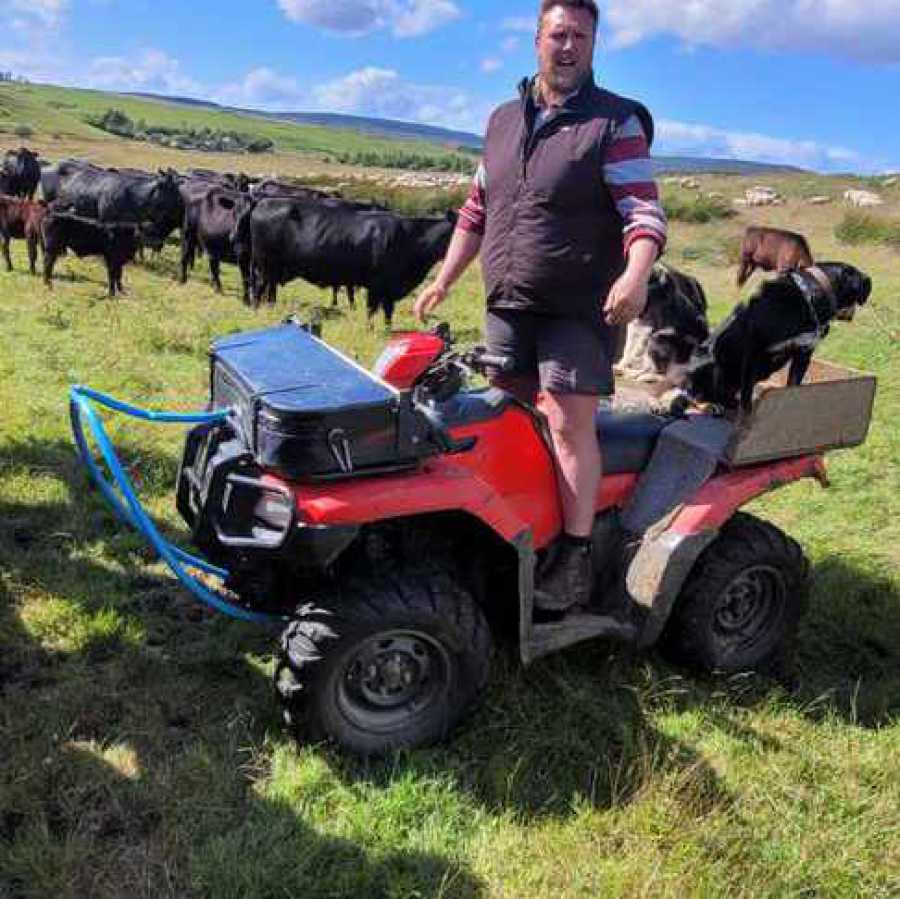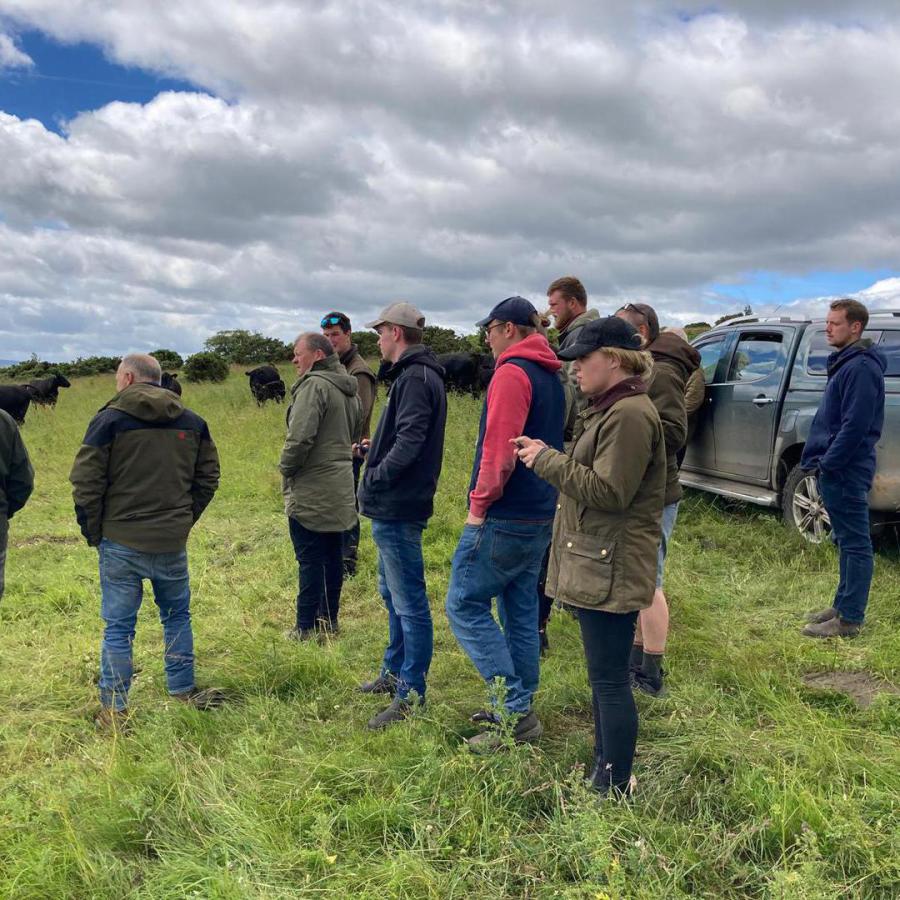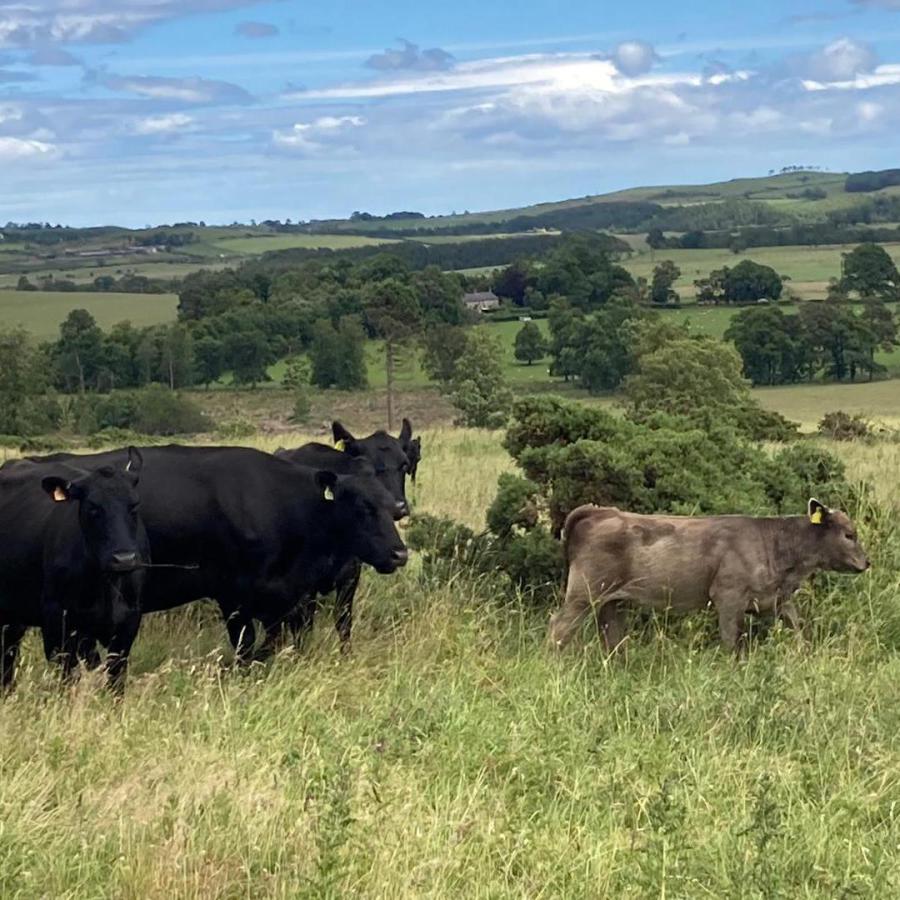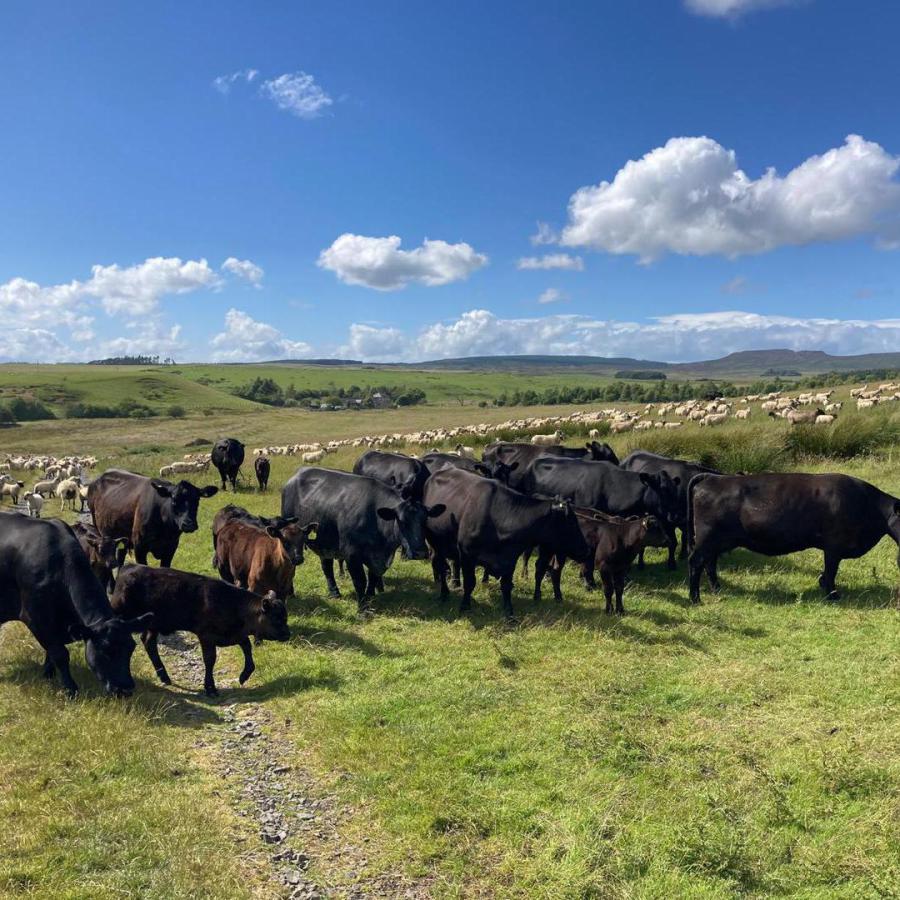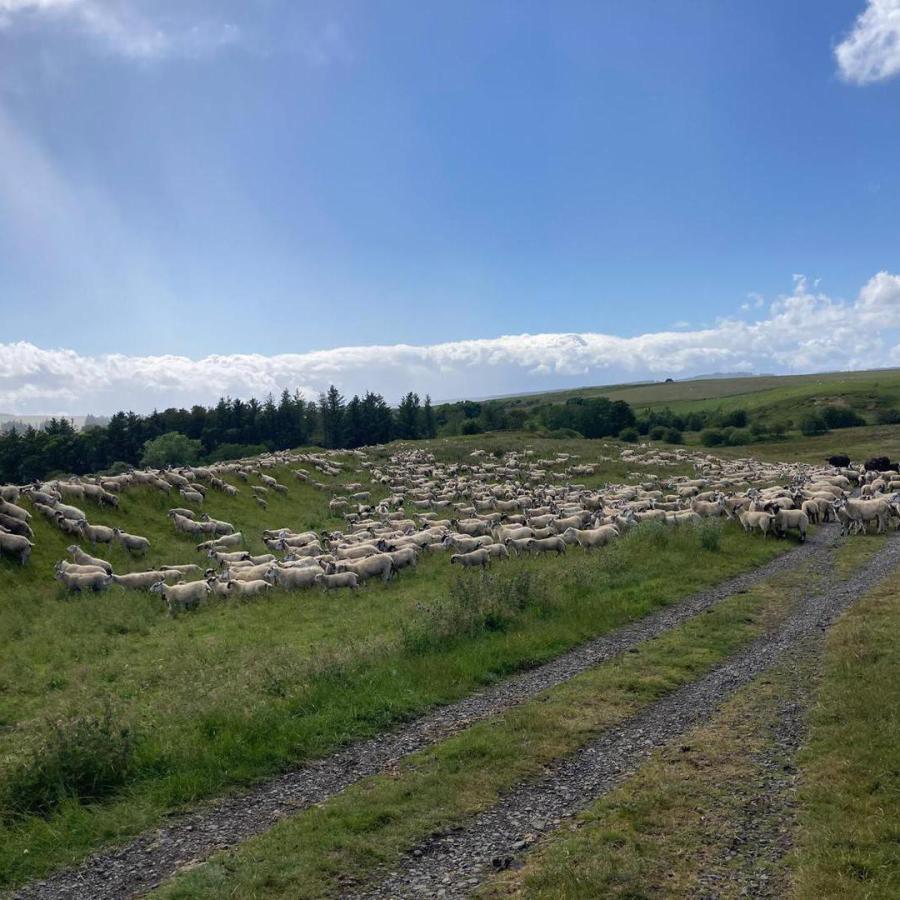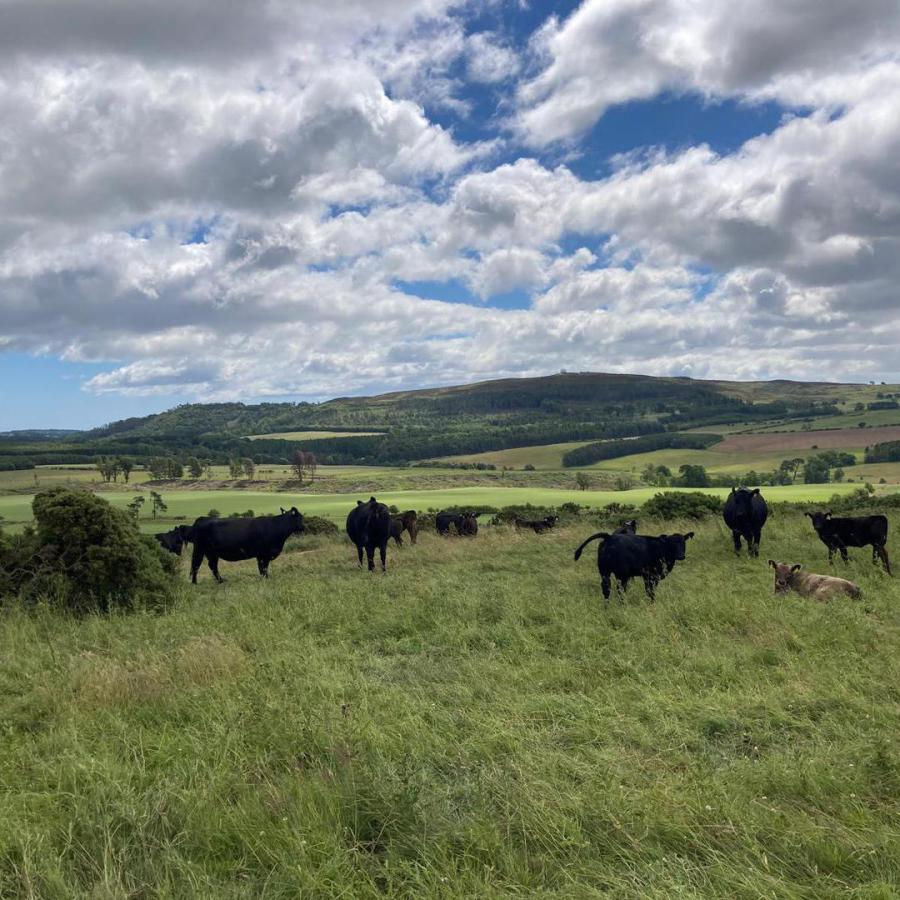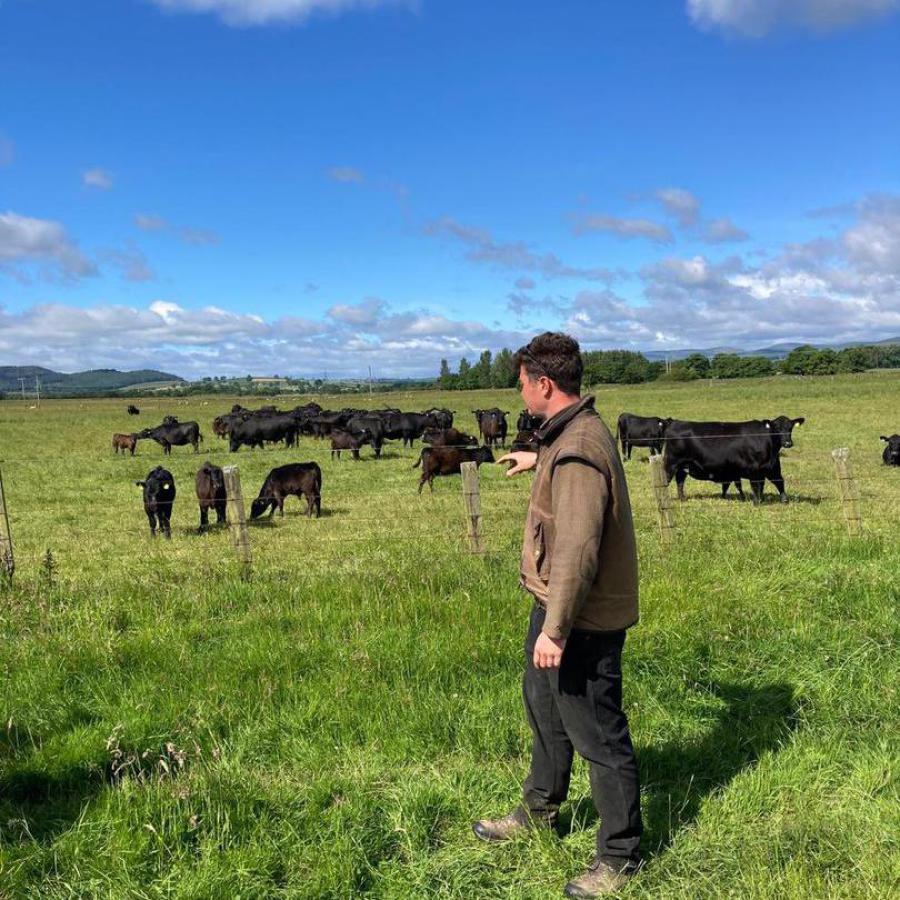2024 trip to Northumberland
Performance Recorded Lleyn Breeders (PRLB) members from across the country headed to picturesque Colt Park, near Morpeth. We were there to visited members Richard and Jen Oglesby just completed their first-year share farming. Having moved up from Yorkshire with their flock of Lleyns to run along side the existing flock of mules, with after pre-tupping culling both flocks numbered around the 800 mark. The mules were tupped to a Hampshire rams already on the farm. The Lleyn ewes were tupped to a mixture of rams; Lleyns, Romneys and Easycares, to find which suited the farm the best. 50 Easycare ewes were also lambed pure and some rams will be retained to use in the future. Shetland rams were used across the ewe lambs which were tupped at 42kg to provide easily born lambs.
The flock lambs outside from the middle of April with minimal cake used to feed the ewes based on body condition score (BCS). The flock is set stocked until after lambing when ewes and lambs are moved in rotation. After weaning in August lambs are moved onto the aftermath of herbal leys cut for silage. Lambs are sold store or finished before the end of October, with 50% being sold for slaughter. Ewes are housed after tupping until the end of February to help build grass covers up.
The 100 head are mated to 3 angus bulls and also calve in April over an 8 week period. They are fed on deferred grazing, then bale grazing for 50 days ahead of calving. The cows and calves are grazed over summer and used to managed help manage grazing land for the sheep. The calves are weaned, and those not selected as breeding females are sold store. The weaned heifers and in calf heifers are overwintered together and separated for calving.
Since moving to the farm, they have added to the environmental schemes adding an SFI and CSI lots of herbal leys have been established and large distances of new fences have been erected to aid grassland management. They are also running a herd of Red deer, a completely new venture for the pair.
On Friday we headed to Broome Park Farm west of Alnwick which again ran a mix of sheep and beef managed by Geore Burrell who took over management 4 years ago. The sheep flock has grown from 200 to 1200 breeding ewes in the last few years, the flock are a mix of Aberfields, Lleyns and Chevease (due to be expanded thanks to their wool shedding ability). The majority of the ewes are lambed outside, with an early lambing mob trailed this year inside. The aim of the enterprise is to maximise output from labour inputs, so lambing outside suits the system more.
Cattle have been a mainstay of the farm for longer, and pedigree Angus bulls have been sold for a number of years, with 30-40 sold per year. Historically 100 cows were housed over winter with the remaining 150 outwintered on the hill with silage taken to them. The move to deferred grazing and bale grazing has eliminated the need to house the cattle and meant sheds can generate income from other streams. When it comes to Estimated Breeding Values (EBVs), a combination is more important than animals that are extreme in individual traits, a key factor is how cows stand up to outwintering mature size/scale and body condition score. The male youngstock are housed overwinter, and go through a feed conversion trail which is feed into the pedigree database. Youngstock are carried through winter and sold for slaughter before their second winter.
Cows are mob mated to 2 bulls in each group, and AI is used on around 50 cows per year. Genetic material from across the world has been used, with George now favouring genetics from Te Mania Angus Australia. To meet society regulations calves have to be DNA tested, so this means George can assign parentage even when mob mating.
George has also used SFI to help fund grazing improvements to help drive output from the farm.
The trip ended with a boat trip to the Farne Islands to see the sea birds. At the end of the breeding season it was buzzing with life with huge numbers of sea birds.


